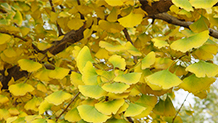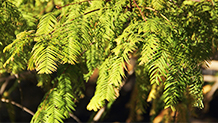| 作 者:Li HG, Wang RZ, Tian ZW, Zhou BJ, Duan R, He R, Dong LM |
| 影响因子:4.8 |
| 刊物名称:BMC Plant Biology |
| 出版年份:2025 |
| 卷:25 期:1 页码:73 |
论文摘要:
Malania oleifera Chun et S.K. Lee is a woody oil tree speciesis rich in nervonic acid, which is associated with brain development. The variation in fatty acid compositionits response to environmental factors in natural populations has not been well studied. A total of 97 mature fruiting individuals were sampled from seven natural populations in GuangxiYunnan provinces, China. The fatty acid content (FAC) was 53.85%. Thirteen fatty acid components were identified. Nervonic acid (NVA), octadecenoic acid (OEA)docosenoic acid (DSA) were the top three, averaging 45.68%, 30.21%14.03% of the FAC, respectively; the saturated fatty acidunsaturated fatty acid contents were 4.82%95.18%, respectively. Coefficients of variation were low to moderate (7.64-18.42%)Shannon-Wiener indices were moderate to high (1.80-2.04) for FAC, NVA, OEADSA. Significant variation between populations was observed for all traits, explaining 62.83%, 40.54%, 21.98%32.85% of the variance for FAC, NVA, OEADSA, respectively. The strong collinearity among traits summarized themthree principal components. FAC was positively correlated with NVANVA was negatively correlated with OEADSA at both the populationphenotypic levels. This pattern was significantly divergent from those documented in tree species with low NVA yields. The production of FACNVA is facilitated by elevated temperaturesreduced relative humidity. These findings provide a foundation for genetic improvement, industrial exploitation, resource management,sustainable development of this species.
DOI:10.1186/s12870-025-06093-w










